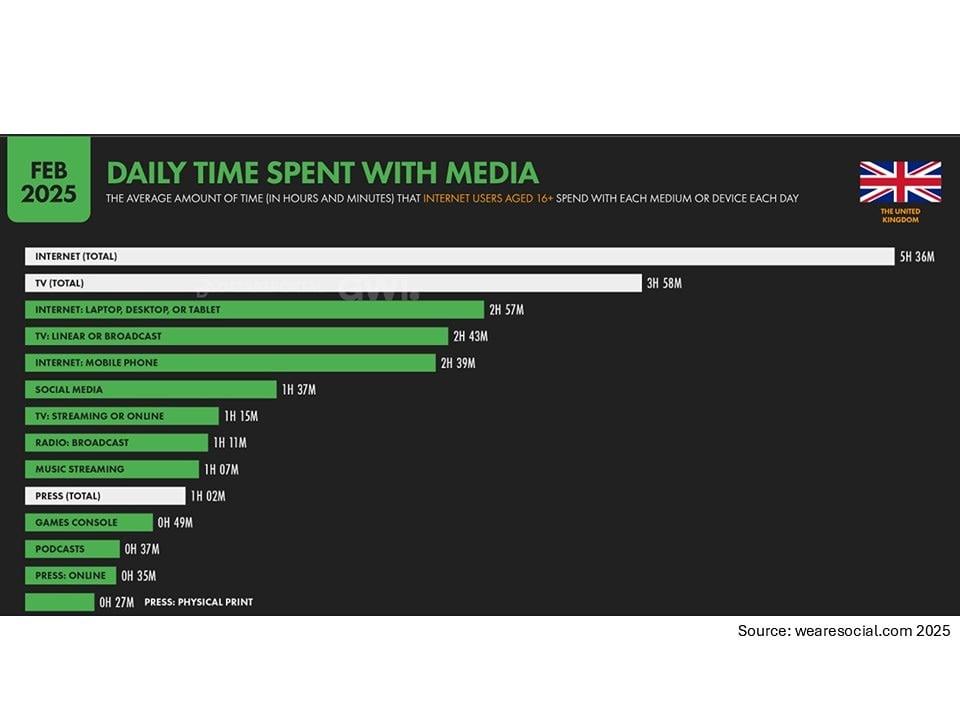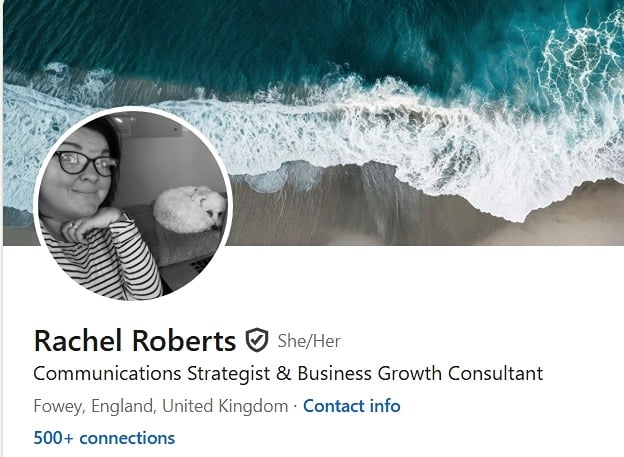The Key Challenges in Modern Media Planning

Hello! This post has been created in preparation for an assignment for the Global Media Planning Module on my Masters in Marketing and Digital Communications. I’ve chosen to turn it into a six-part series on Global Media Planning. Each instalment will answer a different question, I’m sharing as I go, and the final assignment will be a post that addresses just three of the questions. For now, I hope you find this useful whether you’re interested in global media planning, or just curious about what goes into a masters’ assignment. Thanks for joining me!
What Are The Biggest Barriers to Successful Media Planning from an Advertiser’s Perspective
Introduction.
The old-school model - find a big audience, blast out a single message, job done, is finished. Advertisers now face a tangled mess: fragmented audiences, a constant battle for attention, inconsistent measurement, and the ever-growing influence (and complexity) of AI.
First, let's talk about fragmentation.
It’s not just a case of having more channels; people in the UK increasingly inhabit distinct digital spheres, each shaped by its own culture and habits. Recent data shows that 97.8% of UK adults are internet users, and 79%, over 54 million people are active on social media (DataReportal 2025). YouTube alone reaches nearly 80% of the population, while platforms like TikTok and Instagram dominate among younger audiences, with traditional TV still holding sway among older groups (We Are Social 2025; Statista 2025).


This fragmentation is clearly illustrated in We Are Social’s recent (2025) figures: Figure 1 shows overall media use in the UK, while Figure 2 depicts the average daily time spent with different media formats (We Are Social 2025). The result is a media ecosystem where audiences rarely overlap and are exposed to entirely different content, making a one-size-fits-all message increasingly irrelevant. For planners, the days of a single, universal campaign are over. Brands need to craft content that fits each platform’s style, while still feeling unmistakably themselves.
Fragmentation is just the start; there’s also the attention problem.
Getting your ad in front of someone is easy; getting them to notice it is another matter. Programmatic ads mean impressions are cheap, but does anyone really pay attention? Karen Nelson-Field’s research (2025) says we should focus on “attention availability” which measures how much real attention your ad gets compared to what was possible. It’s calculated like this:
(Attentive Impressions × Attention Time) ÷ (Total Impressions × Ad Duration)
Importantly, attention availability depends on the media environment, not just viewer choice. It’s affected by things like scroll speed and ad placement. On TikTok, you have just a heartbeat before someone scrolls away, while Netflix lets you tell a longer story. The old idea that repeating your message everywhere builds impact doesn’t hold up anymore.
Creative strategy must change. It’s about making the most of brief moments, not holding attention for a long time.
Then comes measurement, the next challenge.
Every platform counts views, clicks, or likes differently, and these numbers aren’t ‘apples-to-apples’. A Twitter impression isn’t the same as a YouTube view or TikTok engagement and treating them as if they are just muddies the waters. Platforms have a vested interest in showing you the rosiest numbers, which only adds to the confusion.
The IAB UK’s “Measurement Manifesto” advocates for standardisation across media channels, but this often results in flattening out the very differences that matter most for advertisers (Miles 2024). For a concise overview of these challenges and the rationale behind the Manifesto, take a look at this short clip from IAB UK 2024. Until the industry develops a more nuanced approach, planners are left to cobble together their own hybrid measurement systems, blending platform-specific metrics with broader goals like brand awareness and long-term loyalty.
And then there’s artificial intelligence.
AI is often hailed as the answer to fragmentation, promising to find patterns and automate optimisation. But it’s not a magic wand. Sometimes, AI makes fragmentation worse by creating ever-narrower audience segments based on old data, risking missed trends or reinforcing biases (The Economist 2025). As AI gets better at grabbing attention, planners face tough questions about privacy and manipulation. The challenge is to use AI for insight and efficiency, without letting it take over the creative or ethical steering wheel.
So, if the practical barriers are already this complex, what happens when we add the thorny issue of privacy into the mix?
Read the next part of this series: The Paradox of Privacy: Do Ethical Concerns and Personal Privacy Really Matter in Global Media Planning?
Series Bibliography
Abdullahi, A. (2024) 'Meta to Fully Automate Ad Creation in 'Redefinition' of Industry', eWEEK, 3 June. Available at: https://www.eweek.com/news/meta-ads-ai-automation/ (Accessed: 30 June 2025).
Ambekar, M. (2023) The Ethics of Data Privacy in Digital Marketing. LinkedIn. Available at: https://www.linkedin.com/pulse/ethics-data-privacy-digital-marketing-mandar-ambekar (Accessed: 26 June 2025).
Chaffey, D. and Ellis-Chadwick, F. (2022) Digital Marketing: Strategy, Implementation and Practice. 8th edn. Harlow, UK: Pearson.
Coggan, G. (2022) ‘Heinz asked AI to “draw ketchup” (and it went remarkably well)’, Creative Bloq, 2 August. Available at: https://www.creativebloq.com/news/heinz-ai-draw-ketchup (Accessed: 30 June 2025).
Criddle, C. (2020) 'Facebook sued over Cambridge Analytica data scandal', BBC News, 28 October. Available at: https://www.bbc.co.uk/news/technology-54722362 (Accessed: 27 June 2025).
DataReportal (2025) Digital 2025: The United Kingdom. Available at: https://datareportal.com/reports/digital-2025-united-kingdom (Accessed: 2 July 2025).
DLA Piper (2025) Data Protection Laws of the World. Available at: https://www.dlapiperdataprotection.com/ (Accessed: 27 June 2025).
Elkady, A. (2023) Why AI is 'drastically improving' the effectiveness of media planning. The Media Leader, 10 May. Available at: https://uk.themedialeader.com/why-ai-is-drastically-improving-the-effectiveness-of-media-planning/ (Accessed: 25 June 2025).
EMB Global (2024) Digital Advertising Challenges: Ethical Dilemmas. Available at: https://blog.emb.global/digital-advertising-challenges-ethical-dilemmas/ (Accessed: 27 June 2025).
IAB (2025) State of Data 2025: Evolution of AI for Media Campaigns. Available at: https://www.iab.com/wp-content/uploads/2025/03/IAB_State_of_Data_2025_March__V2.pdf (Accessed: 1 July 2025).
Ismayilzada, M., Paul, D., Bosselut, A. and van der Plas, L. (2024) ‘Creativity in AI: Progresses and Challenges’, arXiv preprint arXiv:2410.17218. Available at: https://arxiv.org/abs/2410.17218 (Accessed: 28 June 2025).
Miles, L. (2024) On Device Manifesto: Embrace media fragmentation. IAB UK, 27 June. Available at: https://www.iabuk.com/member-content/device-manifesto-embrace-media-fragmentation (Accessed: 25 June 2025).
Nelson-Field, K. (2025) The Missing 'Availability'. WARC Opinion, 20 May. Available at: https://www.warc.com/newsandopinion/opinion/the-missing-availability/en-gb/7050 (Accessed: 25 June 2025).
OpenAI ChatGPT (2025) ChatGPT response to Rachel Roberts prompt: “Please list 100 AI tools I could use to help me with media planning” 2 July 2025 Available at: https://chat.openai.com/chat (Accessed: 2 July 2025)
Ring Publishing (2024) ‘The Ethical & Legal Challenges of AI in Media’, Ring Publishing. Available at: https://ringpublishing.com/blog/ai-tools-and-insights/the-ethical-and-legal-challenges-of-ai-in-media/4g2vh4b (Accessed: 1 July 2025).
Statista (2024) Share of UK teens using YouTube as their main platform. Available at: https://www.statista.com/ (Accessed: 1 July 2025).
Stringer, P. (2024) ‘Challenges for media planning in an AI-driven world’, WARC. Available at: https://campaignbriefasia.com/2025/01/17/warc-releases-the-future-of-media-2025-defined-by-abundance-driven-by-algorithms/ (Accessed: 28 June 2025).
The Economist (2025) AI is turning the ad business upside down. 18 June. Available at: https://www.economist.com/business/2025/06/18/ai-is-turning-the-ad-business-upside-down (Accessed: 25 June 2025).
TWIPLA (2024) The Privacy Paradox: Torn Between Love and Fear. Available at: https://www.twipla.com/en/blog/the-privacy-paradox (Accessed: 25 June 2025).
VCCP Media and Nelson-Field, K. (2025) Hacking the Attention Economy: VCCP Media and Dr Karen Nelson-Field reveal 1.5 second formula for effective digital advertising. Available at: https://www.vccp.com/uk/news/2025/may/hacking-the-attention-economy-vccp-media-and-dr-karen-nelson-field-reveal-1-5-second-formula-for-effective-digital-advertising (Accessed: 1 July 2025).
We Are Social (2025) Digital 2025 United Kingdom. Available at: https://wearesocial.com/uk/blog/2025/02/digital-2025-the-essential-guide-to-the-global-state-of-digital/ (Accessed: 2 July 2025).
Young Urban Project (2025) ‘6 Best AI Marketing Case Studies’, Young Urban Project, 28 May. Available at: https://www.youngurbanproject.com/ai-marketing-case-studies/ (Accessed: 28 June 2025).
Zuboff, S. (2019) The Age of Surveillance Capitalism. London: Profile Books.
About the author
Hello! I'm Rachel and I am currently studying for a master’s in Marketing and Digital Communications at Falmouth University. This series on Global Media Planning is part of an academic assignment, so if you’ve ever wondered what university assignments in this field look like, you may find these posts offer a useful insight. I invite you to follow along for future instalments and would love to hear your thoughts or comments, please feel free to share your perspectives on LinkedIn where I am sharing the series.


Comments